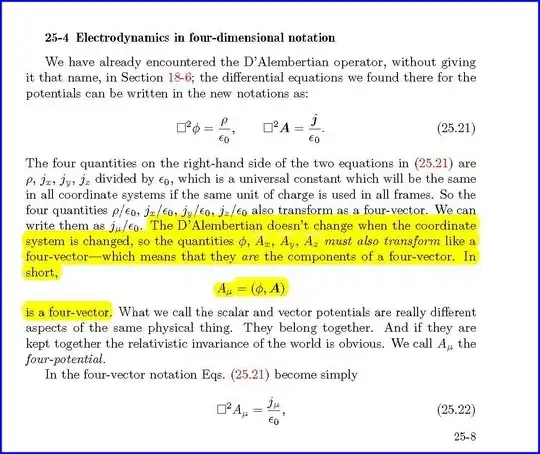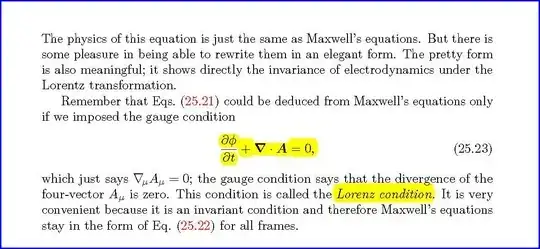Let \begin{equation} \boldsymbol{\Phi}=\Bigl(\dfrac{\phi}{c},\mathbf{A}\Bigr) \tag{01} \end{equation} the electromagnetic 4-potential. We know that if its 4-divergence is zero \begin{equation} \dfrac{1}{c^{2}}\dfrac{\partial \phi}{\partial t}\boldsymbol{+}\boldsymbol{\nabla}\boldsymbol{\cdot}\mathbf{A}=0 \quad \text{(the Lorenz condition)} \tag{02} \end{equation} then Maxwell's equations take the elegant form \begin{equation} \Box\boldsymbol{\Phi}=\mu_{0}\mathbf{J} \tag{03} \end{equation} where the so called d'Alembertian \begin{equation} \Box\equiv \dfrac{1}{c^{2}}\dfrac{\partial^{2} \hphantom{t}}{\partial t^{2}}\boldsymbol{-}\nabla^{2} \tag{04} \end{equation} and the 4-current \begin{equation} \mathbf{J}=(c\rho,\mathbf{j}) \tag{05} \end{equation} which has also its 4-divergence equal to zero \begin{equation} \dfrac{\partial \rho}{\partial t}\boldsymbol{+}\boldsymbol{\nabla}\boldsymbol{\cdot}\mathbf{j}=0 \quad \text{(the continuity equation)} \tag{06} \end{equation} and is a 4-vector.
The question is : under these conditions is the 4-potential a 4-vector ??? I ask for a proof or a reference (link,paper,textbook etc) with a proof.
EDIT
$^\prime$Mainly Electromagnetism and Matter$^\prime$, The Feynman Lectures on Physics, Vol.II, The New Millenium Edition 2010.

